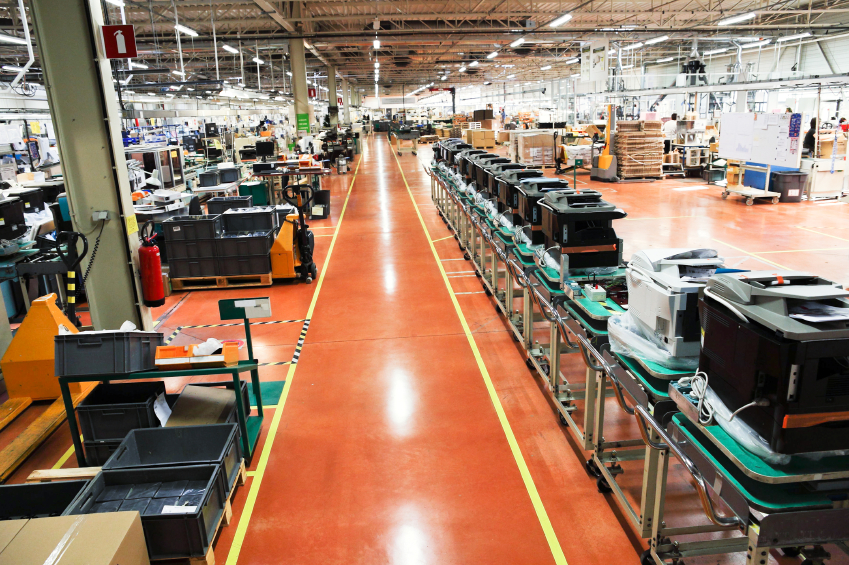Reshoring has become a buzzword in the manufacturing industry describing how many firms are moving facilities back to the U.S. There are a wide variety of reasons for why a firm would make such a large change, including finding a more skilled workforce, bringing production closer to the target market, and increasing the automation in a factory. Reshoring for any reason has to do one thing, though. It must save money.
There have been plenty of successful stories about how a company brought its manufacturing back to the U.S. and has been growing steadily ever since. This news leaves out the stories about the companies that ran into trouble when trying to reshore. Moving a business is never an easy decision, and when that decision is made, it is never sure that the decision will be successful. There are, however, some areas of reshoring that, if paid attention to, can increase your rate of success when you’ve decided to bring manufacturing back to the U.S.
A Project Charter
Those reshoring projects that have already failed have taken on more than they were prepared for, have neglected to include all of the people and internal departments affected by the decision, or were poorly planned and executed. It will take a team to get it right because the successful reshoring decision involves rethinking products, re-engineering production lines, and developing products that will sell in local markets.
The charter should include considerations of the various stakeholder groups including finance, engineering, manufacturing, purchasing, marketing, facilities, IT, human resources, and government affairs. All of these functions will play a role in the project. The reshoring projects that have faltered have done so when some of the stakeholders were left out of the decision-making process, leaving blind spots in the plan. The reshoring team should be inclusive, not exclusive.
Designing the New Facility
Before a company selects a location for a new production facility, the initial innovation and automation work should be completed. This work will identify what new and innovative products will be produced in the new facility and how that production will be automated. Consideration for the new machinery required and the production floor layout will be essential information for facility selection and planning. Even though further work on product design and final recommendations on production machinery may come later, the basic requirements should be known after the initial steps are complete.
New types of machinery such as 5-axis milling, robots, and 3D printers require new thinking about production floor layouts. New machinery may require different spacing and access and dust-free areas for electronics. The reshoring team should work closely with facilities engineering to identify and plan for these special requirements.
Leaving a Foreign Facility for a New Domestic Home
Leaving manufacturing sites in China or other foreign locations has its own set of considerations, such as ending foreign employment contracts, paying exit taxes, and obtaining government approvals to leave. In addition, it may be difficult to retrieve your molds and dies from a foreign factory that thinks it is entitled to keep them.
The overall exit and the logistics process in moving a factory must be carefully managed. The advice and experience of an expert or an international law firm may be crucial to a smooth and efficient exit process. Failure to consider all aspects of exiting from a foreign country can cause delays and unexpected costs.
Transferring a manufacturing line from one location back to the U.S. is a simple idea…but that is not what is happening in a reshoring project. It is not a straightforward process of packing everything up, moving to a new location, and setting up the exact same operation. Reshoring requires innovation, automation, and localization of products. It is not going to be a one-for-one direct transfer. The building configuration and requirements are likely to be drastically different, and so are the products to be manufactured and the markets served.
Your company may have identified a favorable and low-cost U.S. production area, where governments have offered attractive incentives, real estate costs are low, and communities are anxious to bring in new businesses. However, failure to account for the existing skills of workers in the geographic area may be a major disaster to your reshoring efforts.
The company’s supply base is another important consideration. Locating in a low-cost area may appear to be the right decision, until the supply base is taken into consideration. Reshoring managers should work closely with purchasing to determine where suppliers are located, especially those suppliers producing long-lead-time items and strategic parts. The ability to closely manage these suppliers will be very important to keeping production on schedule. Of course, you must also consider where your customers are located. You want to be as close as possible to your markets to optimize logistics costs.
By taking the above areas into consideration during a reshoring project can help to ensure an easier transition and a higher rate of success. In addition to making sure you have a successful reshoring experience, choosing the right factory automation equipment is key if you are going to successfully manufacture in the U.S. and adapt to the ever-changing markets.
Read more about these tips for reshoring from Rosemary Coates, President, Blue Silk Consulting.


